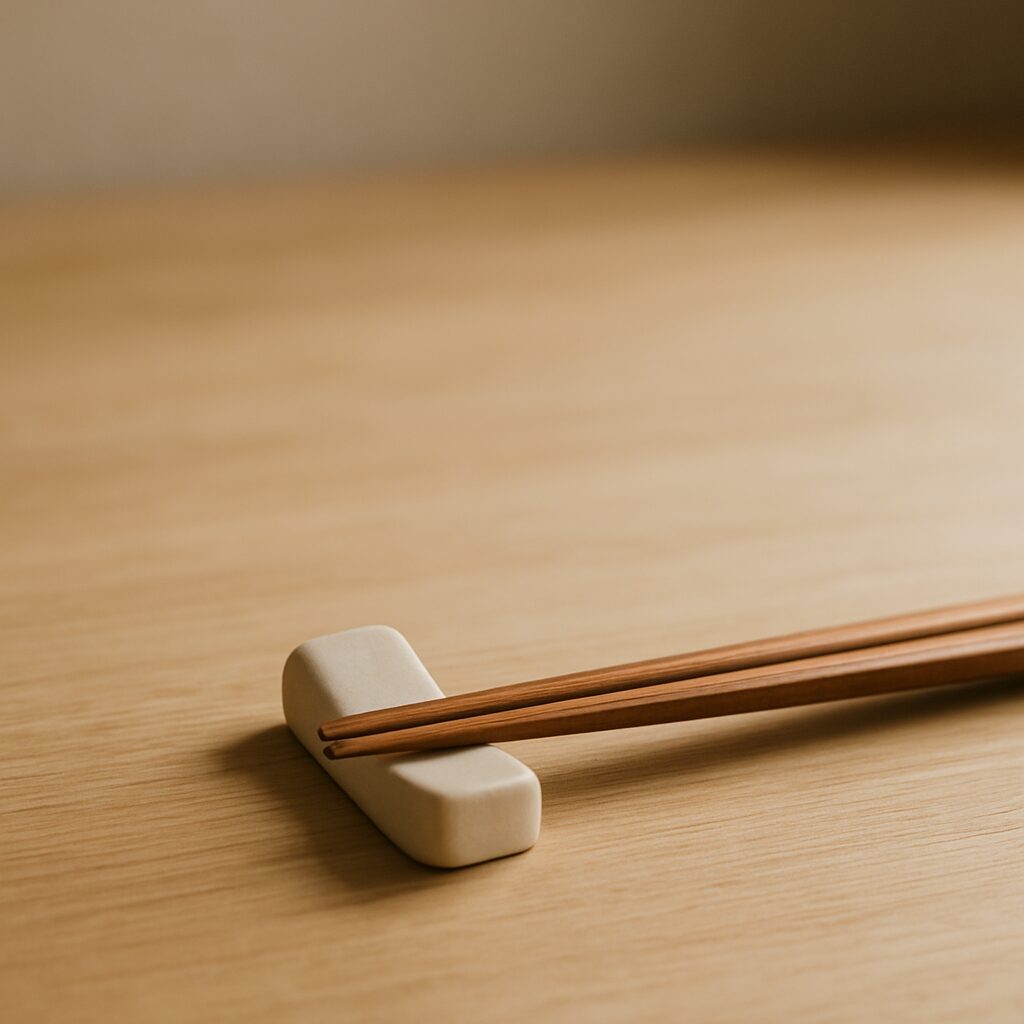Kokoro Still
A hashi-oki is never loud.
It rests beside the plate,
holding silence
as the meal begins,
and again
when the chopsticks return.
Not the food,
not the vessel,
but the pause itself.
It is there,
where stillness gathers in the pause.
In Japanese dining, hashi-oki (箸置き) keeps chopsticks from touching the table.
It is there at the beginning,
when the meal is set with quiet care.
It is present again in pauses—
when both hands lift a bowl,
when tea replaces food,
when conversation takes its turn.
And it receives the chopsticks once more
when the meal has ended.
A small shape in porcelain or wood,
yet it holds the rhythm of dining: beginning, pause, and end.
First Quiet
Before the first bite,
the chopsticks rest in place,
their tips aligned upon the hashi-oki.
The meal has not yet begun,
yet silence already frames it.
Hands at Rest
Sometimes the chopsticks stay in hand,
while the other hand lifts a bowl.
And when both hands are needed,
the hashi-oki quietly receives them.
In that small pause,
the table grows calmer,
as if the stillness had already been there.
Silence Remains
When everything is finished,
the chopsticks return once more,
resting where they began.
The circle of the meal closes,
yet the quiet does not end.
It drifts into the room,
lingers in the air,
and reminds us that stillness,
once found,
does not stay only at the table.
The hashi-oki remains silent.
It only rests,
a small shape
that lets stillness be.
In that stillness,
something is felt—
as if the meal itself,
like the day,
had paused to breathe.
Featured image: The image was created by AI (ChatGPT)



Comments